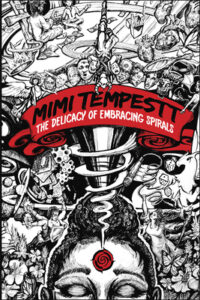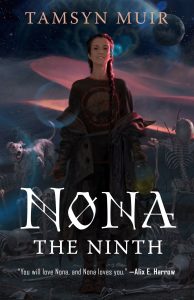From the epigraph to the end, this book is clear-eyed about its aims and its author’s perspective. Tempestt’s writing draws the reader in as a participant, with mentions of readers, watchers, audiences that are not confrontational, but certainly not abstracted. Reading this collection felt like watching spoken word, or another kind of embodied performance. Even their most numinous ideas are tangible, and felt within the reader’s body. This sort of experience can become consumptive, but Tempestt’s lyrical acknowledgement of these possible dynamics means the close reader has to interrogate their own relationship to the text.
What are the boxes offered to you, and what becomes of you when you cannot fit, contort yourself to fit, or decide to totally reimagine the presumed binary of these interactions entirely? It’s like those Barbara Kruger pieces—what do you hope art will do for you even when, especially when, it’s not a mirror?
Tempestt adds to that conversation, questioning how the commodification of artists’ pain and grief perpetuates power dynamics, and reflects entrenched values that prioritize certain approaches over other, equally poignant but under-published ones.
She understands the demands of performance acutely, intimately, and expresses them with a beautiful poeticism. The deforming weight of others demands and needs—both the explicitly coercive and the more implicit, insidious sorts that can arise in intimate relationships and workplaces and alike—are all rendered here. But it is not a bleak work. The poems are full of anger, frustration, also strength, joyful reminiscence, and even a sort of timeless expansiveness in the titular one.
I hesitate to use the word “metaphysical” because it conjures up the sort of philosopher-types whose practices and philosophies are shot through with the sort of categorical essentialism that does not necessarily align with this work’s core spiral symbolism. Or the synecdochal head-shop proprietor whose commercial enterprise’s interiors have sensorially co-opted incense from the practices of currently colonized faiths. But it is either that or the word “transcendental,” and personal connotative grievances aside, there is a sense of something magical in Tempestt’s verse. It is grounded, but there is also something more beneath that earth.
Death and discontent can become defanged when broken into art. But Tempestt’s writing keeps its edges, its piercing-flesh insights. The last piece, a short immersive play, was one of my favorites. The prose was incisive, with both the violence and precision of a fine scalpel, cutting through thick skin and protective coverings to reveal something visually red and viscerally tender.
All that said, I’ve always been drawn to the ambiguousness of poetry, where the interpretation often says as much about the reader as the creator. It can be a site for shared understandings, or one that clearly demarcates the reader’s alienation from the emotional truths of the poet.
This collection was engaging, clever, poetic and expressive. I strongly recommend it to people who enjoy formally-unconstrained but deftly shaped poetry with word-playfulness that seamlessly maintains its heft and intensity.


